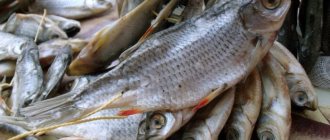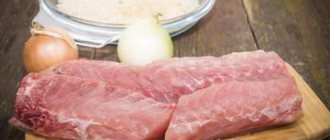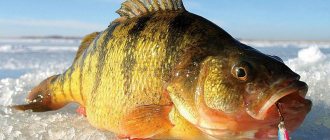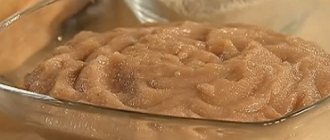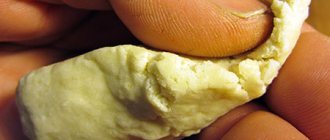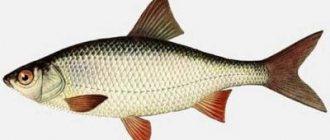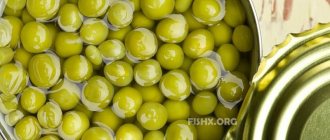Advantages and disadvantages
Like any other bait, the dough has pros and cons. The advantages are as follows:
- Easy to prepare.
- Cheap (the ingredients are available in any kitchen).
- Possibility to vary the smell and taste.
- Cuts off perches, ruffs, and other predators.
The disadvantages include:
- It quickly becomes unusable in the cold.
- Doesn't stay on the hook for long.
These disadvantages can be overcome. Just keep the dough in a warm pocket and it will remain in working condition. And the fact that it is washed away by water and comes off the hook is rather a plus. The fish will be interested in the hanging threads rather than the ball, which will lead to a bite.
Dough phenomenon
Floaters look forward to the beginning of April, as this is one of the shortest, but at the same time exciting periods of open water fishing. As the water masses become warmer and warmer, the feeding activity of fish preparing for spawning increases, and accordingly their biting becomes more active.
Traditional spring float baits, which work flawlessly in most bodies of water, are bloodworms, worms, and caddis flies. Few fishermen prefer other baits, and there is no need to talk about vegetable baits. According to popular belief, they are generally ineffective in cold water. For many years I myself preferred a similar selection of fishing lures. But the experiments that were carried out showed that there is nothing obvious in fishing, and then it was tucked into a syringe.
Its efficiency is highest immediately after the ice melts, when fishing is not yet very effective, since the fish are inactive and it takes time for it to recover after the ice melts and adapt to the changed conditions in the reservoir. The same applies to rivers.
In recent years, I have increasingly started fishing in open water since the appearance of edges in lakes that are sufficient for full-fledged float fishing. In this case, the dough becomes one of the most desirable delicacies of “white” fish. The most active inhabitants of reservoirs at this time of year bite on it: rudd and roach, and a little later - silver bream and bream. As the weather warms up in late April - early May, other fish are found in lakes and the mouths of small rivers: crucian carp, tench, bleak, etc. And more than once it was observed that when changing baits, the bite often died down, and if it continued, then more fish were caught. smaller than dough.
Reflecting on the reason for this phenomenon, I came to a very contradictory conclusion. On the one hand, the aquatic vegetation that “peaceful” fish feed on is just beginning to sprout. There are practically no insects and aquatic invertebrates. It is logical to assume that the dough should not prevail over the bloodworm or worm.
On the other hand, dough, especially liquid dough, is a delicate, easily digestible product that causes less mistrust among fish, especially in reservoirs with high fishing pressure. It has an attractive smell, is clearly visible in water and leaves a cloudy trace when immersed. Perhaps there are other reasons for its attractiveness, due to the characteristics of specific water bodies, the nutritional value of the dough, which affects the balance of fish nutrition, etc. In general, I discovered the spring phenomenon of the test and intend to continue the practice of using it. Especially considering the fact that when fishing it performs such an important function as cutting off unwanted fish from the bait: small perches, ruffs, etc.
Read! Fishing with boiled potatoes
Two main types of test
The dough, as a bait for catching roach and other white fish, is divided into two types:
- Thick. Flour is mixed with water until it reaches the consistency of plasticine. It doesn't stick to your fingers. It is convenient to roll balls of the desired size from it and place it on a hook.
- Viscous. It is also called chatterbox. Without a special device, which is often used as a disposable syringe, it will not be possible to place such dough on a hook. But this same syringe serves as a storage container. It fits easily in an inside pocket and is always at hand.
A few basic recipes
To the two main ingredients - water and flour - some flavoring and nutritional components are often added.
From flour
Dough for catching roach in winter using only flour and water is not very effective. In winter, the roach tries to find high-calorie food containing protein. Powdered milk is great for this. It has the smell and taste that fish need in winter.
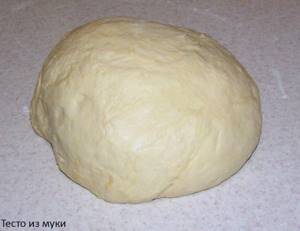
Cake or seeds
The taste and smell of sunflower oil when fishing for roach with dough is to the taste of the fish. However, an excess of this aroma often leads to the opposite result. To add cake or seeds, they must be thoroughly crushed. Then mix the resulting powder with dry flour, and only then add water, making sure that you get the desired consistency.
Garlic
The pungent smell of garlic spreads well even in cold water. It is very attractive to roach, and with its help you can lure fish from a large area. Before kneading, pass the head of garlic through a meat grinder or garlic grinder. Then everything is the same as in the previous case.
Potato
This option is prepared a little differently. The potatoes are boiled and kneaded well. Potatoes are added to the already prepared mass. Mix thoroughly to achieve uniform viscosity. In addition to roach, bream and even carp can be tempted by this aroma.
Equipment for fishing with dough
The first equipment for the test is called passive
It consists of a float or nod, a sinker and a hook. A leash is not needed with this setup. It is better to start fishing with such equipment on several holes, for example three will be quite enough. So on another hole you can put the same equipment, but with a nod and a jig. We lower the dough almost to the bottom and wait for the fish to approach. Only peaceful fish that are active in winter are caught using this method. Such as roach, bream and rudd. If the fish does not approach for a long time, then you need to slightly tug the bait up and down to attract the fish.
The second equipment is called wiring
Wiring of the nozzle is done calmly, without jerking. When raising and lowering, you need to pause or rock the bait. A bite on the dough is expressed weakly, by a slight twitch of the nod. Here you need to immediately make a hook.
Also watch a video about preparing bait:
I hope you liked my article. Write your opinions and comments. Happy fishing!
To Home Page.
By
How to make semolina dough
Unlike flour dough, it is not possible to prepare semolina bait on the spot. You will need a gas or electric stove, since semolina needs to be brewed. This can be done in different ways, but there are two recipes, simple and quite accessible.
Recipe one
To prepare you will need:
- Semolina.
- Water.
- Attractants.
- Pot.
- Spoon.
- Two glasses.

The algorithm of actions is as follows:
- Pour the required amount of semolina into the first glass. The second contains exactly the same amount of water.
- Pour water into a saucepan and place it on the stove.
- After the water has boiled, gradually pour the semolina into it, stirring continuously.
- Having achieved a homogeneous substance, remove the pan from the stove without ceasing to stir.
- We check for the presence of lumps; it is better to remove them.
- Wrap the dishes in a warm blanket and leave for half an hour.
- When the dough has cooled enough to knead with your hands, knead well.
- At this time, add the necessary attractants. It is better to divide the mass into several portions and add your own flavor to each.
You can tint it by adding food coloring. However, there is no definitive proof that this affects fish bite.
Recipe two
To prepare you will need:
- Semolina.
- Water.
- Pot.
- Gauze.
- Attractants.
Algorithm of actions:
- Pour the required amount of semolina with warm water and let it swell for half an hour.
- Make a bag out of gauze so that all the swollen semolina fits into it, and there is still some free space left.
- Fill the pan with water and bring to a boil.
- Place the gauze bag with semolina in boiling water and cook for at least 20 minutes.
- Remove the bag and hang it so that excess water drains away.
- Remove the cooled dough from the gauze bag, knead well, adding flavorings.
Attractants are very different. Lemon juice, anise oil, garlic, unrefined sunflower oil and so on. Experimentally, you can determine exactly which smell is most interesting to roaches in a particular body of water.

There are also recipes: with the addition of boiled peas, powdered milk, and using cotton wool. The choice is large.
Fishing dough made from flour
The flour dough recipe is the easiest to prepare. Wheat, rye and corn flour are suitable for it. Just take flour, add water little by little, and mix gradually.
You can also add egg yolk to the dough, which will make it more sticky and fragrant.
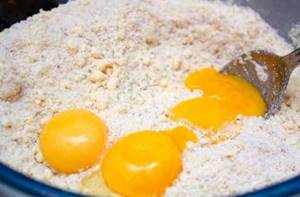
The consistency should be quite thick so that the dough does not fly off the hook during casting. We advise you to take a little flour when fishing, so that if something happens, add more flour to the dough, making it thicker.
How to properly place dough on a hook
The correct quality of placing the dough on the hook depends on the consistency. If it is thick, everything is simple. A small one is torn off from the main piece, rolled into a pea-sized ball and the hook is embedded in it. The forend can be seen - this will not scare the fish. But it’s better to disguise the sting. When fishing for roach in winter on thick dough, not too active retrieves are used. Most anglers simply wiggle the rod's nod slightly with their finger. No jerking, quick rises, or tapping on the bottom.
It is more difficult to hook sticky dough. You can’t take it with your fingers and roll it into a ball. The first thing you need to learn is how to fill a syringe with it. This is done as follows:
- The plunger is removed from the syringe.
- The thick end of the syringe is lowered into the mass.
- The end of the syringe, where the needle is inserted, is wrapped around the lips and the dough is sucked inside.
- The excess is removed, the piston is inserted into place.
- A cap is placed on the cannula (pump on which the needle is placed) to prevent the dough from leaking into the pocket.
The viscous dough is not pushed onto the hook, but rather wound. In summer this is done using a suitable stick. But in winter it is in a syringe or toothpaste tube, and this greatly simplifies the task. Gently squeezing the tube or gently pressing the syringe plunger squeezes out a thin thread of dough. It needs to be wound around the hook so that it forms a ball. It is also not necessary to hide the entire hook, but it is better not to leave the sting in plain sight.
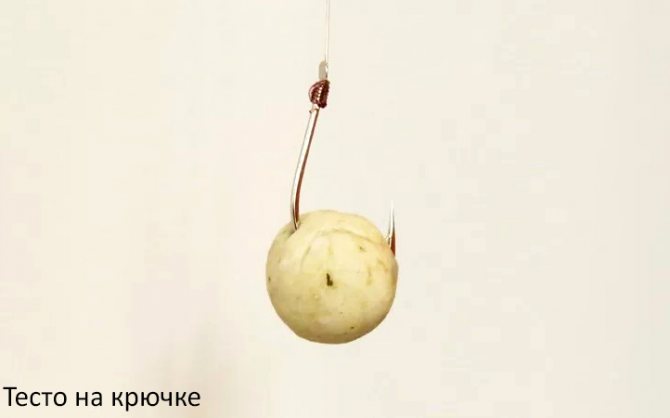
Fishing with viscous dough does not involve any active fishing. It will quickly start to come off the hook on its own. Due to this, an odorous and clearly visible cloud of suspension is formed, attracting the attention of roaches.
Fishing dough - how to make and how to use
The dough is a very effective attachment. Its attractiveness to fish is sometimes simply surprising. It happens that in cool water, i.e. in autumn, winter and spring, white fish do not take bloodworms and caddis flies, but are caught on the dough. And very active. What is the special appeal of the test? How to make it correctly and how to fish with it...
How to make fishing dough
Making dough for fish is not difficult. You need to deliver a small supply of flour, a 20 mg syringe and a small container - a 250 ml glass - to the pond. Ingredients: flour and water.
During manufacturing, the main thing is to maintain the necessary proportions to obtain the desired viscosity. On the one hand, the dough should be as soft as possible, and therefore attractive to fish. On the other hand, it should not fall off the hook when casting, if it is properly wound on the hook. You need to make the optimal viscosity.
This is the best way to prepare dough for fishing. A little flour is poured into a glass, then water is added little by little, portion by portion, with constant stirring. This action lasts 5 - 10 minutes, and the dough for fishing is ready.
A syringe is used
It is better to use the test with a syringe. It is better to pull the dough into it using vacuum. But a pump is not needed. The piston is removed from the syringe, the open part of the syringe is inserted into the dough, and on the other side a vacuum is created with the mouth.
If the dough is of optimal density, i.e. If it is sufficiently liquid, it should be able to be drawn into the syringe without any problems. But when squeezing out, the dough continues to crawl out of the syringe when it is not needed. Therefore, you definitely need to stock up on a medical needle cap.
Cooking options
An alternative to flour is semolina. It makes semolina mash. You just need to knead and leave it for longer - about 20 minutes. But in terms of catchability, ordinary wheat flour is still better.
You can add smell and attractants to the dough. It is possible that it will turn out well, as long as you don’t overdo it. But for cold water, an additional pungent odor is often not necessary; it interrupts the bite. While the plain dough continues to catch fish well. Having a supply of flour, you can experiment with the attractiveness by making a portion separately.
Dough in cold water
Often fishermen in cold water do not use vegetable baits at all, sensibly believing that at this time nothing will be better for fishing than bloodworms, worms and maggots. According to the theory, fish in cool water will be primarily interested in living creatures, which are much more nutritious.
But there are no absolute rules in fishing, and that’s what makes it interesting. Despite everything, fish in cool water are often caught better with dough than with bloodworms. Moreover, the effectiveness of the test is surprising - the bites of roach, bream, and crucian carp are greedy. Can be repeated for a long time, i.e. the flock remains in place and is clearly interested in the bait.
Why do fish like dough?
What is the reason why fish dough is so attractive? There are probably several reasons.
- Firstly, the dough is more noticeable. It leaves behind a cloudy and odorous trail for fish, attracting it from afar. The bait is very small, however, it is a good bait for fish, dissolving, often falling off the hook, gradually creating a cloudy cloud. This results in microfeeder fishing.
- Secondly, dough is easily digestible compared to living creatures. Perhaps in cold water the fish will pass by hard corn or harsh pearl barley, slippery pellets of bread. But the very soft, half-dissolved dough, apparently, is just a delicacy for the fish, like candy. After all, it is known that fish prefer soft fluffy bait rather than hard and slippery ones.
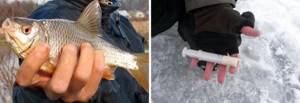
How to hook dough
When inserting the dough, you should not leave the tip open. This bait will quickly wash itself and slide off the hook, gradually exposing the sting.
In most cases, the dough is squeezed out of the syringe and at the same time wrapped around the hook - around the hook, tip and shank in several turns.
If the dough is made and set correctly, then it stays on the hook not only when casting, but also withstands not one but two bites. After the first one, the remnants should provoke a second one.
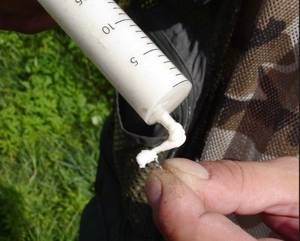
Fishing Features
For catching larger fish, when you have to wait for a bite, it may be more advisable to use a more viscous dough. Then it is more convenient to make pellets from it and apply it with your fingers.
Often an effective sandwich is dough with livestock. The first one to bait the hook is the larva. And then, the dough is wound higher, covering the sting, but so that the larva does not stick and remains mobile. It makes an excellent bait for bream.
It is advisable to choose a thin hook for fishing with dough, with a short shank, and white. The size should be small so that the dough winding holds better. The shape depends on the fish being caught - now there are many hooks for their intended purpose, for bream, roach, crucian carp.
When to catch
When compared with other attachments, the dough is especially effective in cold water. In the off-season, when the weather is bad, sunfish often stay on the shallows among the already (or not yet) green thickets. In such conditions, with the help of the test you can detect schools of roach or crucian carp trails. While other baits are not in demand.
But in the summer you shouldn’t forget this bait, especially when the bite is excellent. Because this bait causes a greedy bite and adds excitement with its presence.
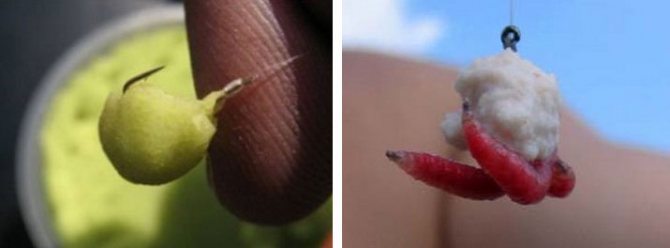
Fish serving techniques
The main method of catching is on the fall. Or by weight, casting past the bait and swimming through the feeding spot. Or wiring around the bait point. This is a very effective maneuver, since the fish often circles not far from the baited point, periodically running at it to steal...
A distributed load is used on the fly rod. And sometimes it is better to use a light jig instead of sinkers when fishing by weight.
Frequent recasting during active biting is the main technique for using the test when fishing. The fishing spot is saturated with aroma, the fish more actively takes the tasty soft bait.
Lure
Feeding the hole in winter while fishing for roach gives several positive effects at once. Firstly, it will attract fish standing in the distance. Secondly, it will help keep the flock in the right place. Thirdly, it will disperse the ubiquitous small predators, perch and ruff.
They also feed using a self-opening feeder. But a column of suspension will have a greater effect. The fish do not always stay near the bottom. Roach, depending on weather conditions and atmospheric pressure, can rise either half-water or right under the ice. This column is formed when dry small bait is poured into the hole in small portions.
Dry semolina, breadcrumbs, coconut flakes, and crushed sweet biscuits are used as bait. Branded bait also works well, but sometimes it gives inexplicable failures or causes the opposite effect.
During the first cold weather, and especially after ice has formed on the reservoirs, you should not write off such a universal attachment for white fish as dough. In the vast majority of cases, it gives results.
